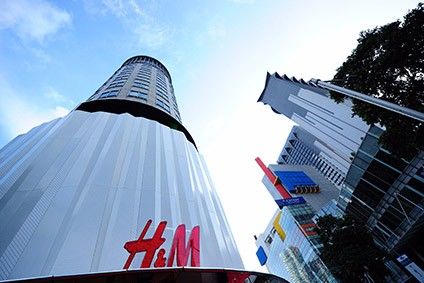
Retailer H&M Group is to accelerate the integration of its physical store and online channels after seeing second-quarter sales of its trend-led fashions halved and profit wiped out by Covid-19 lockdowns and store closures.
The group also said it expects markdowns in relation to sales to increase again in the third quarter due to an oversupply of spring products throughout the industry, and a weakened market.
In its earnings release this morning (26 June), CEO Helena Helmersson said that when the majority of the stores were temporarily closed in the second quarter, “we focused on redirecting product flow to our digital channels, which remained open at all times in nearly all our online markets.
“It is clear that the rapid changes in customer behaviour caused by the pandemic will further speed up the digitalisation of fashion retail,” Helmersson added. “To meet this, we are continuing to adapt the organisation and improve our ways of working, which will make us more flexible, fast and efficient. We are accelerating our digital development, optimising the store portfolio and further integrating the channels.”
H&M also revealed plans to increase the pace of store closures for full-year 2020 amid a reduction in the number of openings compared with what was previously planned. The group has earmarked about 170 closures and 130 openings, resulting in a net decrease in the number of stores of around 40.
The news came as the fashion group reported a loss after tax of SEK3.06bn (US$327.99m) for the six months to 31 May. Loss after financial items amounted to SEK3.98bn. Group net sales fell 23% to SEK83.61bn from SEK108.49bn in the first half-year. In local currencies, net sales decreased by 24%.

US Tariffs are shifting - will you react or anticipate?
Don’t let policy changes catch you off guard. Stay proactive with real-time data and expert analysis.
By GlobalDataH&M said about 80% of its store portfolio was shuttered by the middle of the second quarter.
For the three months from 1 March to 31 May, group net sales slumped by 50% to SEK28.66bn, compared to SEK57.47bn last year. Online sales, meanwhile, were up by 36% in SEK and 32% in local currencies during the same period.
Loss after tax for the quarter amounted to SEK4.99bn, while gross margin was 46.3%. H&M said the decline in gross margin was mainly due to the costs included in “cost of goods sold” that cannot be adjusted at the same pace as the rapid evolvement of the Covid-19 situation. The cost of markdowns in relation to sales increased by around 3 percentage points.
Helmersson said “rapid” adjustments to product purchasing and buying plans meant that the stock-in-trade was able to be reduced somewhat in the second quarter compared with the previous year.
Meanwhile, sales in the period 1–24 June were down 25% in local currencies compared to the same period the previous year. Currently, 350 stores, representing 7% of the total, are still closed, while many still have local restrictions and limited opening hours.
However, while differing local restrictions mean the pace of recovery varies greatly between markets, it has so far been “better than expected.”
“Although consumption generally remains subdued, our recovery as restrictions have been eased shows that our assortment is relevant and appreciated by our customers,” she added.
Further online investment required
Kate Ormrod, lead retail analyst at data and analytics company GlobalData, notes H&M’s focus on trend-led seasonal product and the high level of markdown anticipated in Q3, mean profit recovery will take time.
“Consumer reluctance to visit physical stores, with the in-store experience dented by social distancing measures, and fewer social occasions to encourage spending, are obstacles to overcome in H2 – all with the threat of a second wave hanging overhead. H&M’s value positioning is undoubtedly beneficial, as many shoppers are expected to trade down, but unique product and showcasing value for money will be key to entice purchases post-pandemic.”
In addition, Ormrod notes a large store estate was undesirable in H&M’s mature markets even before Covid-19 but is “especially unnecessary” given the swift global shift to online in the second quarter.
“H&M is known for having been late to the party when it comes to embracing online, but following heavy investment in recent years, the value player will have been better able to protect itself during lockdown than some competitors – and, in the UK, likely benefitted from Primark shoppers’ inability to buy online.
“The online channel accounted for 28% of group sales in H1, compared to 16% in FY2018/19. H&M’s pureplay rivals set the standard when it comes to online experience and fulfilment, leaving H&M with work to do in H2 to elevate its online offer to drive conversion and basket sizes.”




